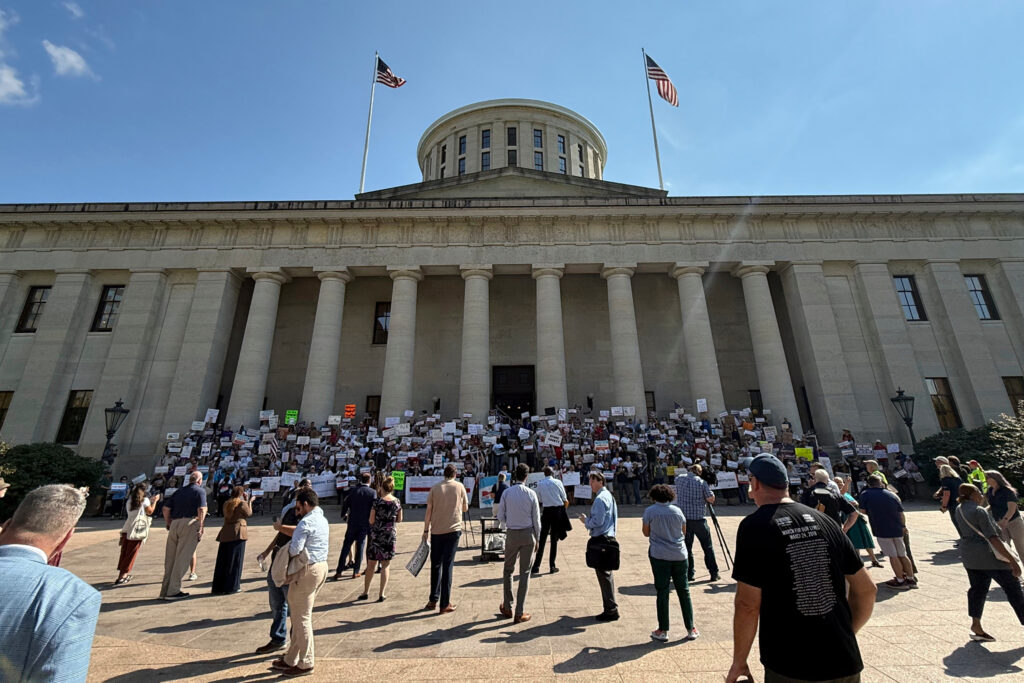Ohio Voters Tell Lawmakers They Want Fair Maps as Redistricting Kicks Off

Ohio’s redistricting process kicked off Monday, as lawmakers held their first public hearing. But with no map yet released by the majority Republican Party, voters were able to comment only on a proposal submitted by Democrats.
Ohio Republicans look likely to try to redraw districts in a bid to win more congressional seats. Unlike in Texas and Missouri, the process is taking place now to fulfill a state constitutional requirement, not at the request of the White House. But the result — to give the GOP an unearned boost in next year’s midterms — could be the same.
Under the state’s current map, the GOP controls 10 out of 15 congressional seats — even though in 2024, 55.1% of Ohio voters supported President Donald Trump, while 43.9% supported former Vice President Kamala Harris.
Democrats and ordinary Ohioans lined up to argue for a map that better reflects the will of voters. The Democratic proposal would cut the GOP’s likely edge to 8-7.
“We should have a congressional delegation that fairly and accurately represents that split,” House Minority Leader Dani Isaacsohn (D) said.
Beth Lykins, a Columbus resident, told lawmakers the proposed Democratic map would be fair to both parties, “giving everyone an equal voice and an equal chance to work side by side.”
Voters have fought for years to win fair maps in Ohio, passing redistricting reforms in 2015 and 2018 aimed at blocking partisan gerrymandering. The Ohio Supreme Court struck down the state’s congressional map as unconstitutional in 2022. And in 2024, Ohio Republicans used misleading ballot language to defeat a pro-voting initiative that would have taken away redistricting power from politicians.
State Sen. Willis E. Blackshear Jr. (D) slammed his Republican colleagues for not releasing a proposed map ahead of the hearing, saying their tactics undermine the will of Ohio voters.
“This is exactly what happened in 2021, when deadlines were missed in September and October that were put in place by redistricting reform to encourage us to work together,” Blackshear said. “There wasn’t any bipartisan engagement in the process until November, which led to the passage of an unconstitutional, partisan proposal on a party line vote that split up Black and Brown communities of color, undermined past voter preference and favored one party.”
Ohio must approve a new map by the end of the year. If the Ohio General Assembly doesn’t pass a map by a three-fifths vote in each chamber – including at least half of Democrats – by Sept. 30, then the seven-member Ohio Redistricting Commission will attempt to adopt a plan. If the commission doesn’t have enough votes to adopt a map, the ball goes back to the General Assembly, which must pass a map by the end of November in a simple majority vote.